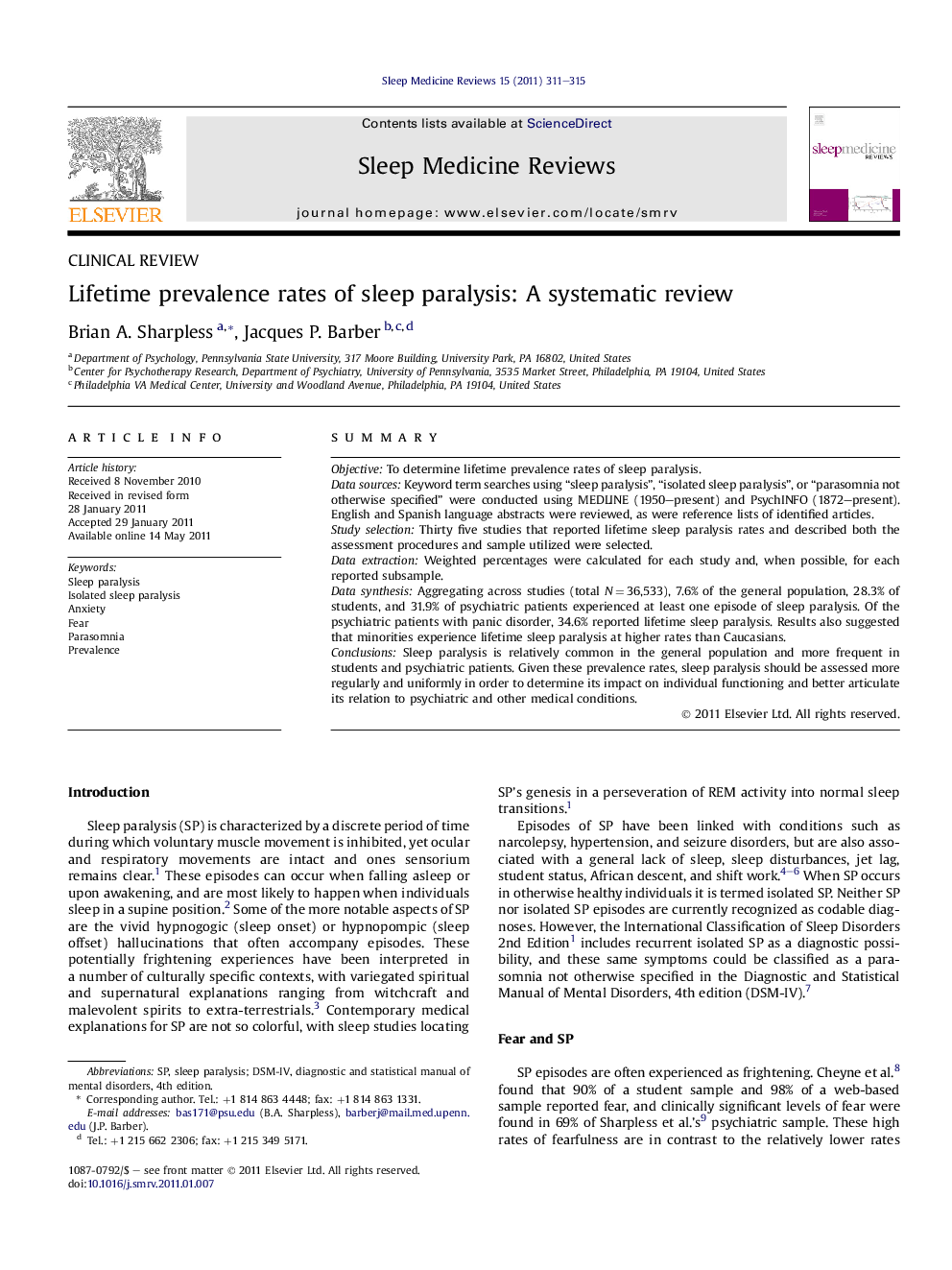| Article ID | Journal | Published Year | Pages | File Type |
|---|---|---|---|---|
| 3091692 | Sleep Medicine Reviews | 2011 | 5 Pages |
SummaryObjectiveTo determine lifetime prevalence rates of sleep paralysis.Data sourcesKeyword term searches using “sleep paralysis”, “isolated sleep paralysis”, or “parasomnia not otherwise specified” were conducted using MEDLINE (1950–present) and PsychINFO (1872–present). English and Spanish language abstracts were reviewed, as were reference lists of identified articles.Study selectionThirty five studies that reported lifetime sleep paralysis rates and described both the assessment procedures and sample utilized were selected.Data extractionWeighted percentages were calculated for each study and, when possible, for each reported subsample.Data synthesisAggregating across studies (total N = 36,533), 7.6% of the general population, 28.3% of students, and 31.9% of psychiatric patients experienced at least one episode of sleep paralysis. Of the psychiatric patients with panic disorder, 34.6% reported lifetime sleep paralysis. Results also suggested that minorities experience lifetime sleep paralysis at higher rates than Caucasians.ConclusionsSleep paralysis is relatively common in the general population and more frequent in students and psychiatric patients. Given these prevalence rates, sleep paralysis should be assessed more regularly and uniformly in order to determine its impact on individual functioning and better articulate its relation to psychiatric and other medical conditions.
